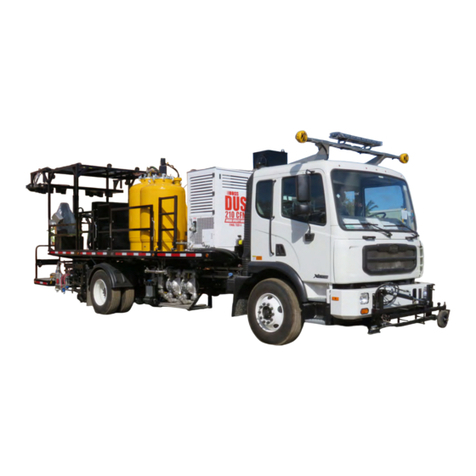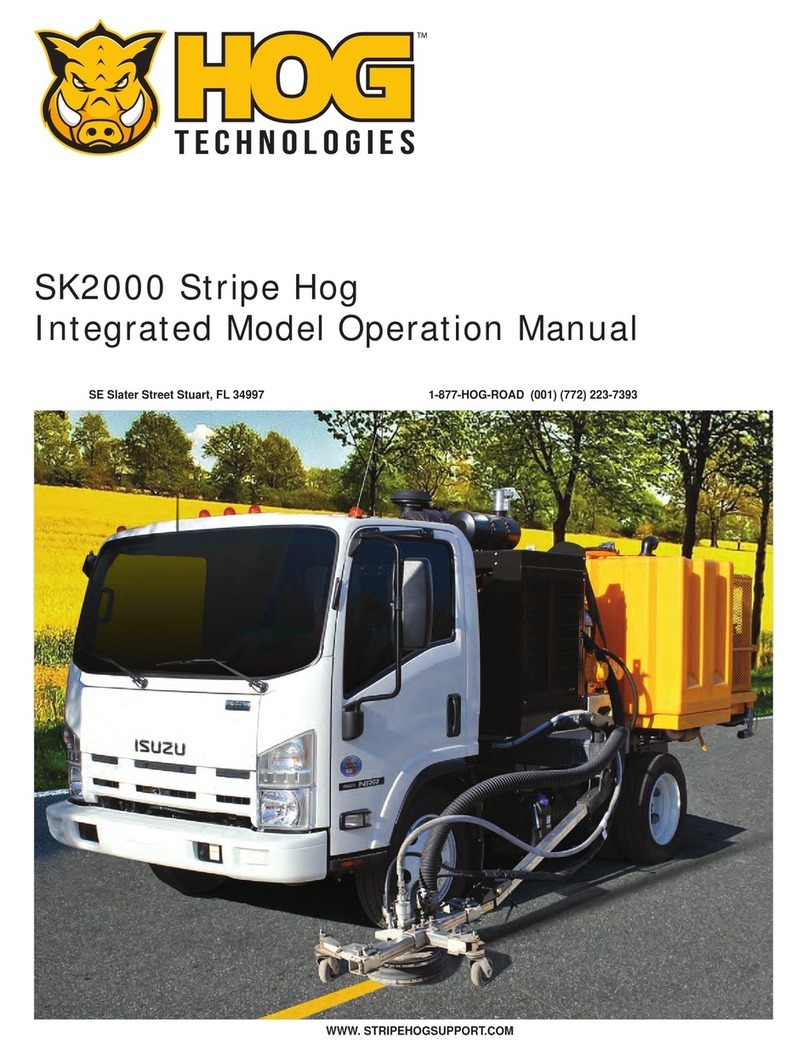
8
WARRANTY
Hog Technologies Limited Warranty
Hog Technologies warrants its components to be free from defects in material and workmanship while
under normal use and service. Hog Technologies will, at its option, either repair or replace free of
charge any such part that appears to us to be defective in material or workmanship during the warranty
period. The warranty evaluation by Hog Technologies as to the cause of the defect shall be conclusive.
For approved warranty shipments, Hog Technologies will provide no charge Fed-ex ground or Fed-Ex
Economy shipping. If customer requests expedited shipping, the dierence in the shipping costs will
be invoiced to the customer.
Hog Technologies reserves the right to request the component(s) to be returned, freight pre-paid, for
analysis before proceeding with any warranty claim. The customer shall be responsible for payment
of any replacement components requested. If the warranty claim is approved by Hog Technologies,
credit will be issued for the components under warranty.
No warranty is made, either expressed or implied, for defects, failures or malfunctions resulting from
corrosion, misapplication, over-pressurization, insucient or lack of maintenance and any modica-
tions to the component as supplied by Hog Technologies.
Any components replaced during the period of warranty will be warranted only during the period of
the initial warranty, and no extensions shall be made, unless in writing by Hog Technologies in addi-
tion to the provision of the terms of the original warranty.
Hog Technologies will not be liable for damage, abnormal wear or consequential damage to their sys-
tem components resulting from the use of replacement components that are not furnished by Hog
Technologies.
Hog Technologies will not be liable for charges incidental to the removal of damaged or defective com-
ponents, lost time and prots, or any consequential damages resulting from failure of the component.
Hog Technologies reserves the right to make improvements to future models without the need to retrot
or upgrade prior models. Hog Technologies shall not be obligated to perform retrots and/or modi-
cations to components manufactured prior to the incorporation of the new design and specications.
Components that are not originally manufactured by Hog Technologies, including but not limited to,
the truck chassis, Jetstream Pump, OMSI (Gear Box), Dresser Roots Blower, are warranted only to
the extent of the original manufacturer’s warranty and are subject to their allowance to us if found
defective by them. Copies of other manufacturers warranty statements are supplied at the time of
sale. Hog Technologies will assist with warranty claims on components not originally manufactured
by Hog Technologies.
*For approved warranty claims that include labor: If such labor is provided at customer location and
not at Hog Technologies headquarters, Hog Technologies reserves the right to invoice customer for
reimbursement of travel-related expenses.
Hog Technologies Warranty Schedule
Warranty starts from the date of acceptance by the purchaser. Date of acceptance shall
be dened as the time that the Stripe Hog is received by the purchaser. Acceptance of
the Stripe Hog shall imply agreement to the terms and conditions of this warranty.
• 1 - 365 Days: 100% Parts and 100% Labor *





























